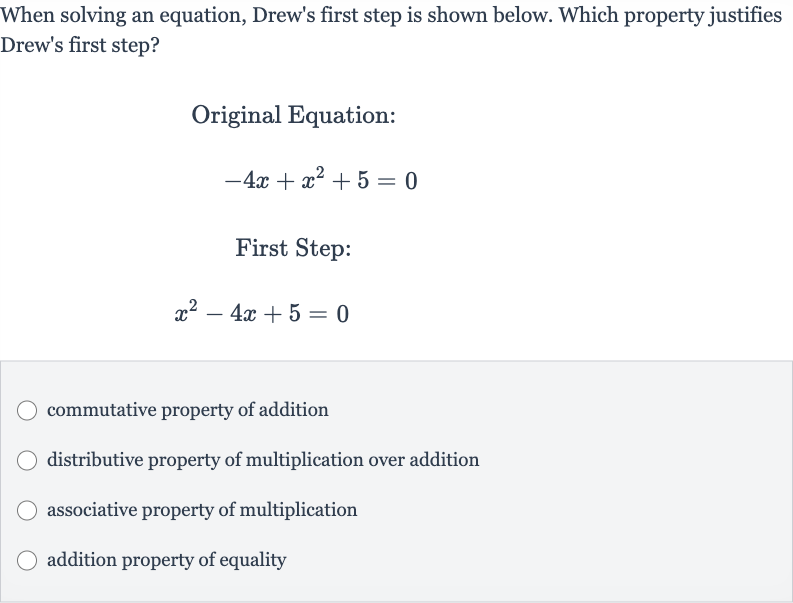AI tutor
Welcome to Bytelearn!
Let’s check out your problem:

When solving an equation, Drew's first step is shown below. Which property justifies Drew's first step?Original Equation:First Step:commutative property of additiondistributive property of multiplication over additionassociative property of multiplicationaddition property of equality
Full solution
Q. When solving an equation, Drew's first step is shown below. Which property justifies Drew's first step?Original Equation:First Step:commutative property of additiondistributive property of multiplication over additionassociative property of multiplicationaddition property of equality
- Rearranging terms: Drew's first step is rearranging the terms of the equation from to . This step involves moving terms around without changing their values or the operation between them. The property that allows the rearrangement of terms in an addition or subtraction operation is the commutative property of addition.
More problems from Identify properties of logarithms
QuestionGet tutor help
QuestionGet tutor help
QuestionGet tutor help
QuestionGet tutor help
QuestionGet tutor help
